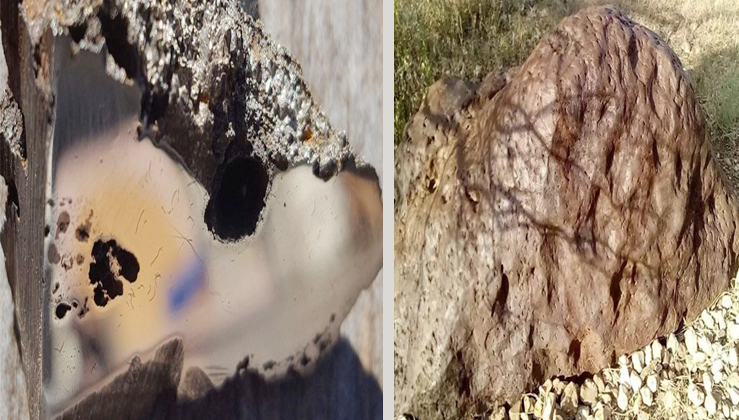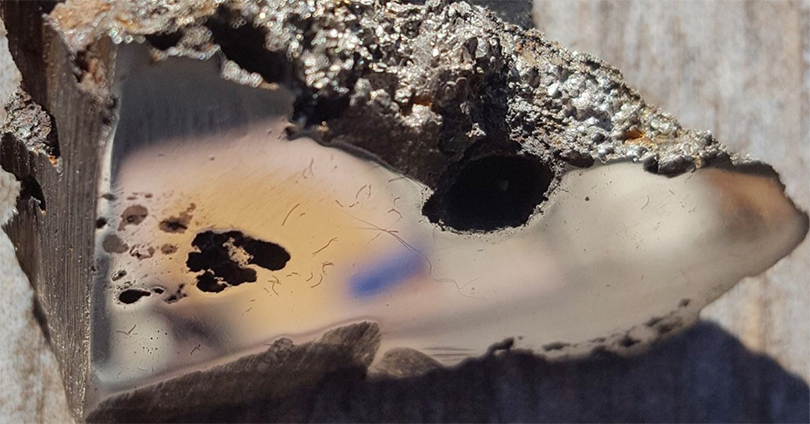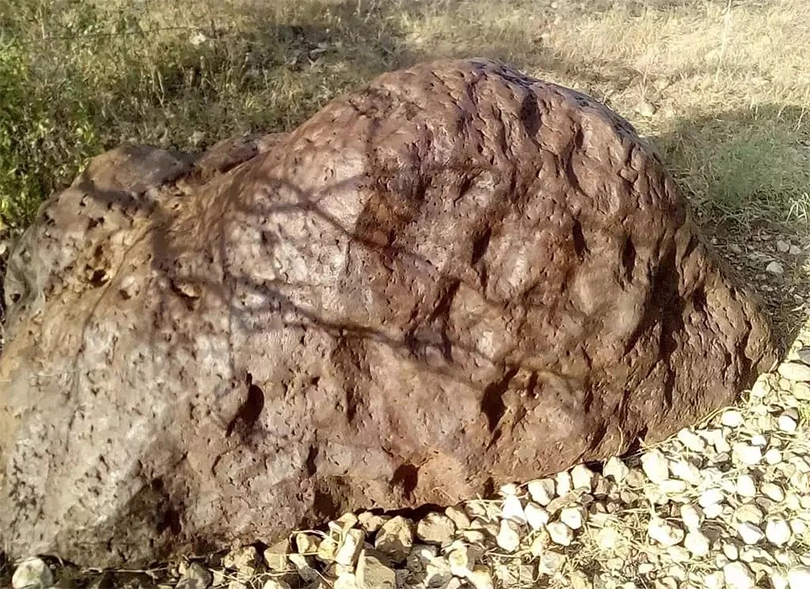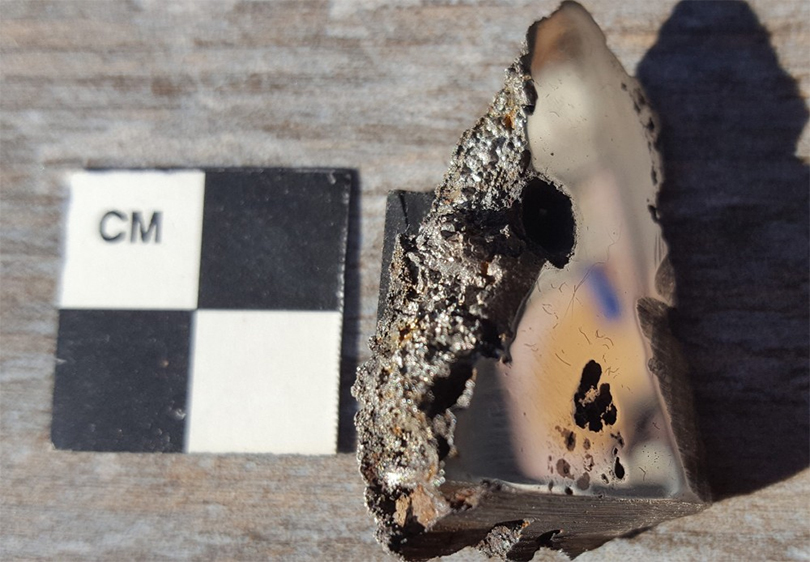In 2020, a massive 16.5-ton meteorite known as the El Ali meteorite plummeted to Earth in Somalia, and within its celestial bulk, scientists unearthed two previously unseen minerals. This extraordinary discovery holds the promise of unveiling valuable insights into the enigmatic formation processes of these space rocks.
In 2020, a colossal meteorite made a rare arrival in Somalia and unveiled two never-before-seen minerals, as identified by researchers at the University of Alberta. This substantial space rock, weighing a remarkable 16.5 tons (15 tonnes), ranks as the ninth-largest meteorite ever discovered on Earth. While countless space objects enter the Earth’s atmosphere daily, only a select few survive their fiery descent, making this meteorite an extraordinary exception. These newfound minerals within the meteorite offer an intriguing glimpse into the mysteries of cosmic rock formation.
A remarkable discovery emerged when a 2.5-ounce (70-gram) sample of the meteorite reached the University of Alberta for analysis. Researchers at the university pinpointed two minerals that have never been documented on Earth. Chris Herd, a professor in the Department of Earth & Atmospheric Sciences and curator of the University of Alberta’s Meteorite Collection, explained the significance of this find, stating, “Whenever you find a new mineral, it means that the actual geological conditions, the chemistry of the rock, was different than what’s been found before. That’s what makes this exciting: In this particular meteorite, you have two officially described minerals that are new to science.” Image credit: University of Alberta
Intriguingly, a third potential new mineral is currently under consideration, pending further analysis. The confirmation of its presence would require additional research. If researchers were to access more samples from the immense meteorite, the possibility of discovering more minerals remains open, as suggested by Herd. However, the meteorite’s current location in China, where it has reportedly been moved for sale, makes it uncertain whether further samples will be available for scientific investigation. Image credit: University of Alberta






